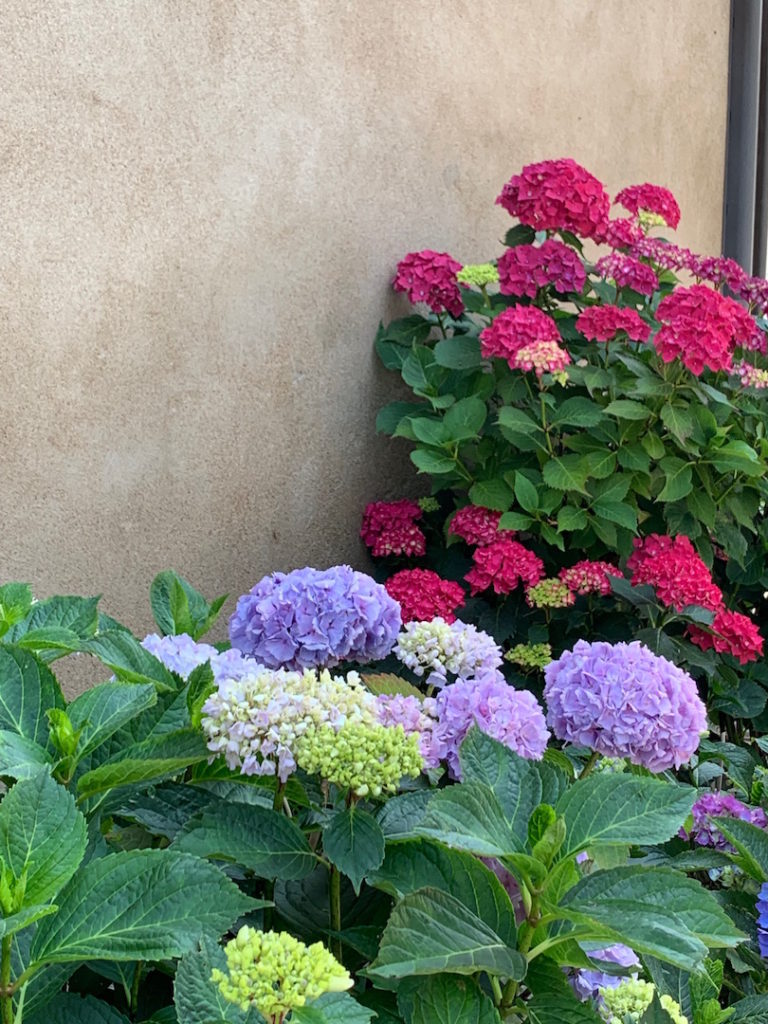God’s ingenious perfection of form and function
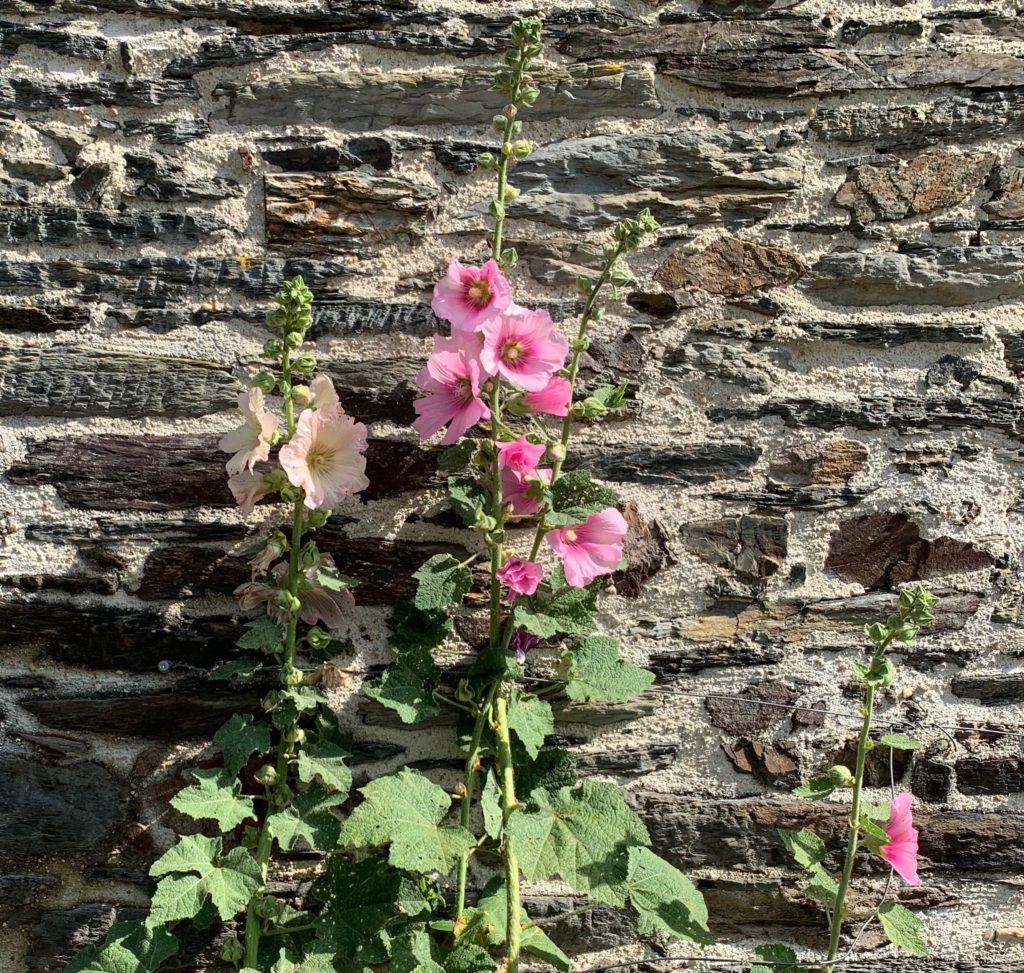
Our Love Affair with Flowers
Around this time of year I’m immersed in seed catalogs. Even though I will only buy zinnia seeds, I still have to explore all the possibilities. After decades of pondering my options, I can name every flower and usually recognize their Latin equivalents. There are dozens of flowers I’ve tried and failed to grow from seed—passion flowers, bells of Ireland, and snapdragons, to name a few. Yet I remain hopelessly infatuated.
I’m not alone. All over the world, people cultivate flowers and create public gardens for their display. What is it about their fragrance, colorful petals, and varieties of leaves that mesmerize us? Why do we extract their oils to perfume our bodies? And why did God come up with such an ingenious method of reproduction? Their purpose is to make seeds (more on that later).
And what bounty! Consider God’s extravagance in pouring flowers over the globe: poppies and forget-me-nots in Alaska, orchids and roses in South America, honeysuckles and bottle brushes in Australia, lilies and violets in Africa, the lotus and hibiscus in India, peonies and camellias in China … whether we look at deserts or rain forests, mountains or flatlands, islands or continents, there are flowers everywhere. And as if we didn’t have enough, we print them on dresses, copy them in gemstones, paint them on canvases, and decorate everything from school notebooks and cakes to teacups and throw pillows with them. Life without flowers is unthinkable. Consider the traditions that depend on them. What is a wedding dress without a bouquet? Or a table at a fine restaurant without a vase? Or the triumphal close of a ballet without rose petals showering the stage? We need flowers even to mourn—who can forget the deep piles of bouquets outside of Kensington Palace when Princess Diana died in a car crash in 1997?
I’m no scientist, but I suspect we’re hardwired to need beauty. And one of creation’s most beautiful gifts is that of flowers. It’s not a waste of time to cultivate and nurture those things that cause our souls to soar. Surely this is relevant to being truly human.
Growing and Giving Flowers
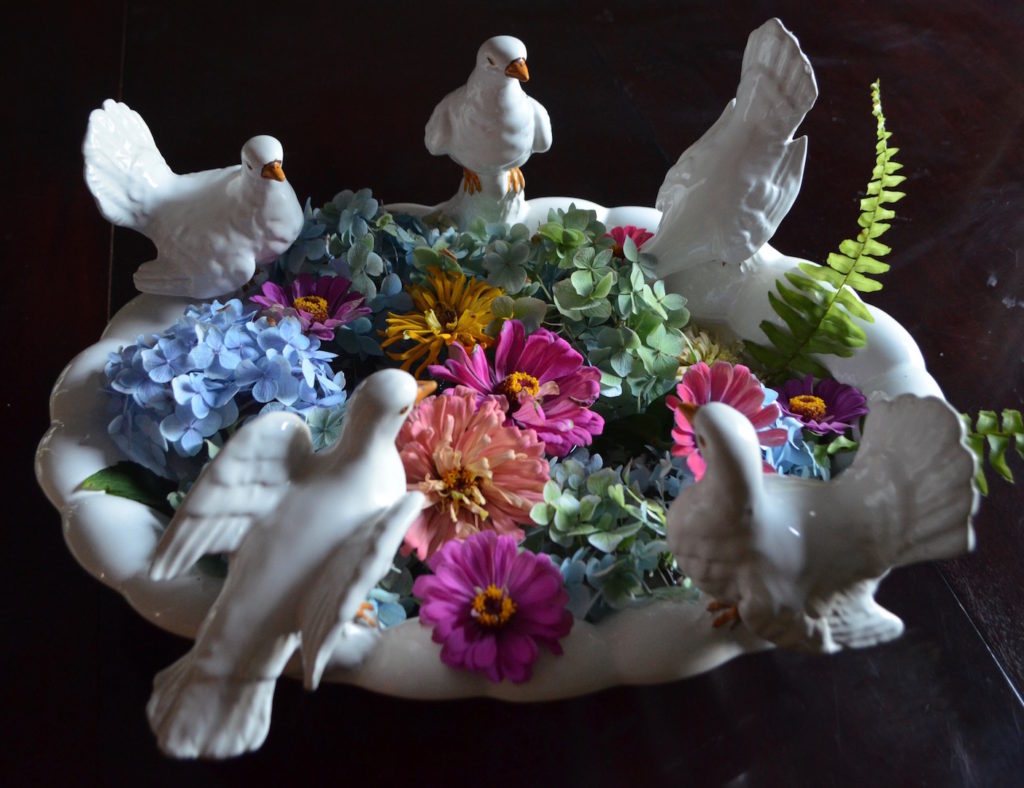
There’s a Goodwill Store not far from my house, and I drop by every week or two to look at the art, books, and flower vases. I don’t live in a fancy part of town, so it’s remarkable that I’ve found so many interesting vases: small cloisonné ones in blue enamel, a black Japanese vase with paintings of theater masks, a bas-relief white German vase, a cut crystal bowl. In addition to vintage vases, I find trendy ones, too: modern glass squares, a huge Crate and Barrel art vase, and tall cylinders. I rarely pay more than a dollar or two.
This stash of containers begins to disappear come June when the hydrangeas, peonies, and gardenias bloom. The zinnias I planted mid-April are flowering by now; they’ll flourish through September. I love big blooms—the cactus variety and California giants. I also plant scabiosa, a short version with pompom centers. They’re just so darn cute. I’ve given up growing much else due to the animals or my ineptitude. Squirrels destroyed the sunflowers I once grew along the pasture fence—they treated them like trampolines and trapezes as they hijacked seeds. Deer gobbled up the gorgeous blooms of stocks as if they were candy; overnight they vanished. When they stripped my Don Juan roses for the third year, I gave up. I was done spraying and netting heirloom roses. I’m not interested in working that hard for flowers!
But I am interested in giving them away. A bouquet created from the garden is a rare gift these days. Unlike a candle from Anthropologie or a tube of favorite hand cream (I love both), garden flowers are not formulaic, especially when cut and arranged with a specific person in mind. A bouquet is a lavish, temporary pleasure.
It doesn’t take much to create a beautiful arrangement. To the flowers I add ferns and wild ginger from our woods, variegated hosta leaves and jasmine vines, some spikes of liriope and a sprig or two of silvery lavender or dusty miller. Voila! A ribbon or piece of twine finishes the vase with a handwritten greeting.
How Does a Flower Make Seeds?
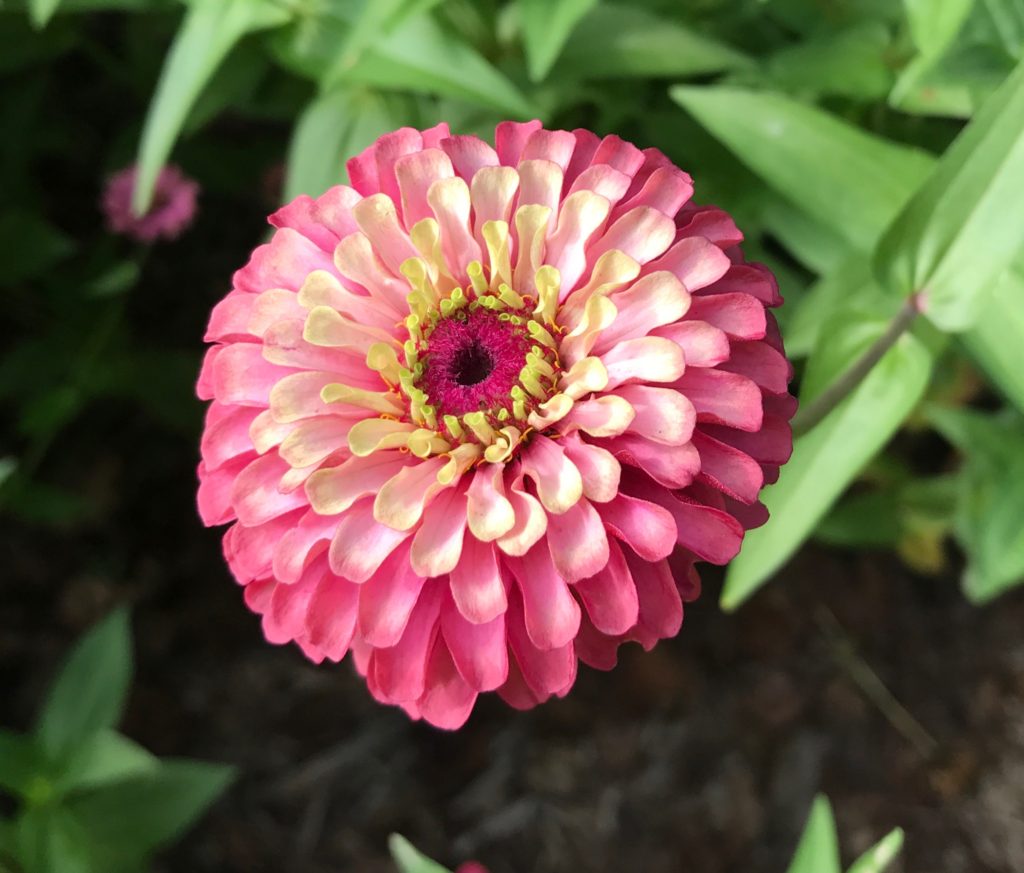
It’s worth understanding how a flower works, which I learned only recently. It’s truly marvelous. Here’s the kindergarten version. Petals are the Pretty Woman: the gorgeous dress, beautiful hair, and friendly eyes. When insects see those lush petals, they want to get close. So imagine a bee with those hairy legs. It flies to the center of the flower, landing on the spiky things. The middle one is the pistil, and it’s sticky. Trapped in the bee’s fur are tiny grains of pollen from another flower. Some get stuck on the pistil. Those tiny grains grow tubes into the pistil and down its stem into the … ovary! That part’s easy to remember. That’s where the unfertilized baby eggs are (they’re called ovules). They get fertilized and grow into seeds.
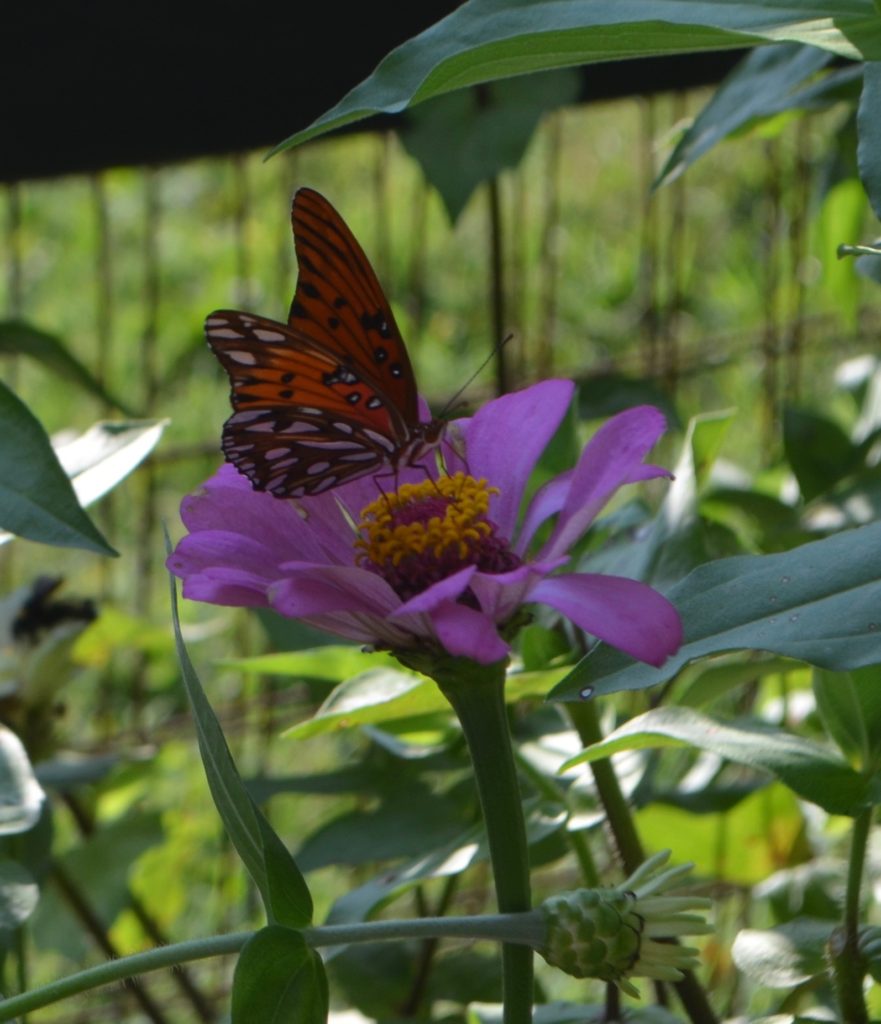
Is that why the bee lands there? Of course not. The bee or butterfly or hummingbird goes to the flower with an entirely different purpose in mind: to get nectar. Flowers produce this sugary drink with trace proteins, acids, salts, and oils.
Now back to the pollen. It’s on the spiky things around the pistil. Sometimes each top looks like a powdery kernel of rice perched on a stem. That’s the anther, and it makes pollen (the powdery stuff). The stem holding it up is a stamen. If you’ve ever brought lilies into the house and discovered a mustard yellow powder on your blouse—that will not wash out!—you’ve been dusted with pollen from the anther. Flowers that use their own pollen to make seeds are self-pollinators. Flowers that need pollen from a neighbor are cross-pollinators. Either way, a flower needs help getting the pollen to the sticky part.
Flowers Keep the World Growing
The next time you see a pretty flower, you’ll appreciate its ingenious role in the world. It brings you pleasure, feeds insects, and runs a birthing center. When I hear scientists say the earth evolved to produce plants with flowers, I have to smile. They believe time plus chance produced order. I’m still waiting to see evidence for that! The Bible says an actor stepped in: God brought order out of the khaos, the void. “Then God said, ‘Let the earth produce plants. Some plants will make grain for seeds. Others will make fruit with seeds in it. Every seed will produce more of its own kind of plant.’ And it happened.” (Genesis 1:11 ICB)
And it’s happening still. In the prettiest way possible!
